Description
Day 1 -:
Pickup from Cochin Airport / Railway Station transferred to Munnar enroute sightseeing tour of Cheeyappara waterfalls, then proceed to Munnar and check into Hotel. Over night stay at hotel.
Rose Garden
Take a stroll inside the garden to see this excellent stretch that looks no less than a Mini heaven on earth with Hundreds of Colourful flowers and plants other than roses, Perched at a height of 3500 feet above sea level, (The entrance fee is be paid directly at the entrance)
Tea Museum
Just like any other hill station of India, Munnar is equally known for boasting breath-taking beauty, picturesque hills, amazing weather, and mesmerizing waterfalls. The refreshing tea estates of this hill station look no less than a paradise on earth and are so beautiful that the one who witnesses its charm and magic never really wants to go back home. A place that gives you exactly the same feeling and makes you go gaga on your visit to Munnar is the Kannan Devan Tea Museum.
Day 2 – :
After breakfast, explore Eravikulam National Park and later visit Kundala Dam, Eco Point and Pothamedu View Point. Overnight in Munnar.
Eravikulam National Park
The fauna of this beautiful national park consists of a lot of animals, amphibians, birds, and butterflies. It is full of beautiful creatures that can be only found in the hills of the Western Ghats. Some of the fauna reported here are described below:
- Animals: There is a large variety of animals in this national park that survive on the existing vegetation of the national park, which is in turn controlled by the quality of the soil, the type of climate of the area, and rainfall conditions. There are about seventeen mammals, eleven birds and seven butterflies indigenous to the Western Ghats area. There are a total of 48 species of Mammals present at the park, including Nilgiri Tahr and Nilgiri Marten, out of which 17 are endemic to the Western Ghats. Other creatures at the park include amphibians, birds and butterflies.
- Birds: There are a total of one hundred and thirty-three species of birds in the National Park out of which almost eleven species are endemic to the Western Ghats.
Some of the famous birds found in the area are Jungle Bush Quail(Perdicula Asiatica), Indian Golden Backed Three-Toed Woodpecker(Dinopium Javanese), Small Green Barbet(Megalaima Viridis), White Breasted Kingfisher(Halcyon smyrnensis), and Indian Lorikeet(Loriculus Vernalis) among others.
- Butterflies: Eravikulam National Park is famous for its butterflies. There are a huge number of butterflies in the region that add to the aesthetic of the park. The area has a total of about a hundred species of butterflies in the region that have been identified by academics. Out of these only 11 are endemic to the Western Ghats.
There are several butterflies available here that have become endangered and it is extremely important to take conservative measures for such species. A few of the endangered butterflies in the region are Southern Birdwing(Troides minos), the Malabar Raven(Papilio gravidarum), Red Disk Bush Brown(Mycalesis oculus) butterflies, the Palni Fourring(Ypthima ypthimoides), the Nilgiri Tiger(Parantica nilgiriensis) which is also indigenous to Western Ghats, the White Disk Hedge Blue(Celatoxia albidisca) butterflies and the extremely rare Tamil Darlet(Oriens concinna).
- Reptiles: Even though the national park lies in the tropical zone, due to the microclimate that has formed in the area, it has become hard for reptiles to survive here. This makes it increasingly important to help conserve the species of animals that are exclusive to the Eravikulam region.
The park itself has a total of only 13 species of reptiles out of which five species are lizards and the rest 8 are snakes. Ten out of the thirteen species of reptiles in the region are available in the Western Ghats.
Some of the lizards and snakes available in the area are the Anamalai Spiny Lizard(Salea anamallayana), Keeled Grass Skink(Mabuya carinata), Palni Shield Tail Snake(Uropeltis pulneyensis), Buff Striped Keelback(Amphiesma stolata), Gunther’s Vine Snake(Ahaetulla dispar) and the Perrotet’s Mountain Snake(Xylophis perroteti).
- Amphibians: Due to the freshwater supply in the region from the rivers in Eravikulam and the extra tropical climate, several amphibians are also available within the national park. There are a total of twenty-one species of amphibians which have been reported at the park out of which a majority of 17 are endemic to the Fauna of Eravikulam National Park.
Some rare kinds of amphibians in the area include Ridged Toad(Bufo parietalis), Leith’s Leaping Frog(Indirana leithii), Bicolored Frog(Rana curtipus), Yellow-Bellied Bush Frog(Philautus flaviventris) and the Boulenger’s Bubble Nest Frog(Philautus signatus).
- Fish: The freshwater rivers and other water bodies present in the Eravikulam region have a lot of marine life out of which most of it is caught for production. There are four species of fish that have been identified here. Out of this, the main three species of fish that can be commonly found in the region are, Lipped Algae Eater(Horalabiosa joshuai), Cardamon Garra(Garra hughi) and the common Rainbow Trout(Salmo gairdneri gairdneri).
All these animals, mammals, birds, butterflies, reptiles, amphibians and fish together make up the fauna of this ecosystem. A majority of these creatures are endangered, or endemic to the region making it extremely important to look after them and help them grow and survive. You will be able to see a majority of these animals on your visit to the park. However, the endangered ones are sighted rarely.
Echo Point
Three mountain ranges – Mudrapuzha, Nallathanni, and Kundala, meet at the Echo Point. And you can walk around the gentle slopes or explore the surrounding tea plantations and spice gardens. You can also hop on a boat or sit by the lake watching the birds. It’s heaven for adventure enthusiasts, nature lovers, and photographers. ( Entrance fee is free at this point)
Kundala Dam
is a masonry arch dam completed in 1947 and its considered to be one of Asia’s first arch dams,The dam stands at a height of 46.93 metres and has a length of 259.38 metres. With 5 spillways and vertical lift gates.(Entrance fee to the Dam is free but there is boating which is 100/-per person for the 30 minutes pedal boating)
Pothamedu View Point
Pothamedu View Point, situated 5 km off Munnar, is adorned with stretching hills and lush green mountains. One can witness the spectacular wide views of tea, coffee and cardamom plantations of the area. It is an ideal place to witness beautiful sunrises and sunsets. Idukki Arch Dam which is about 60 kms away is visible from this viewpoint on a clear day,
Day 3-:
After breakfast, drive to Thekkady (Periyar). Check-in, proceed for sightseeing tour of Periyar. Set high in the ranges of the Western Ghats in Kerala, is the Periyar National Park and Tiger Reserve. Periyar wildlife sanctuary has a picturesque lake at the heart of the sanctuary spice plantation tour etc. Enjoy a boat ride on the lake to view the wildlife at close quarters. Later,
spice plantation tour. As you take a walk along the streets of Kumily or the winding pathways among the plantations, the thing that strikes you first is the lingering aroma in the air. The scent may be of cloves, nutmeg, pepper, cinnamon or cardamom and sometimes a fragrance that combines the scents of two or more spices. The geographical and climatic peculiarities of Kumily such as the cool climate and its elevation from the sea level make it ideal for spice cultivation.
Back to hotel and overnight in Thekkady.
Day 4-:
Today Your Trips end with wonderful memories. After breakfast, you will be transferred to Cochin Airport/ Railway Station for return flight back home.
***END OF THE TOUR***

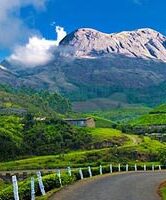
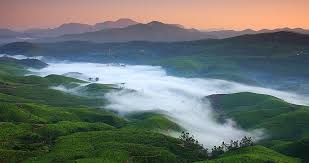
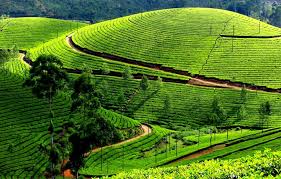
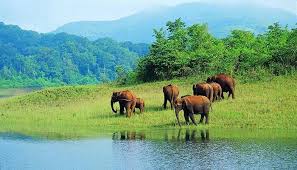



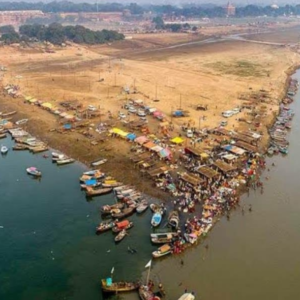
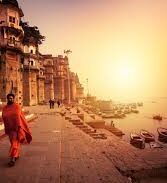

Reviews
There are no reviews yet.